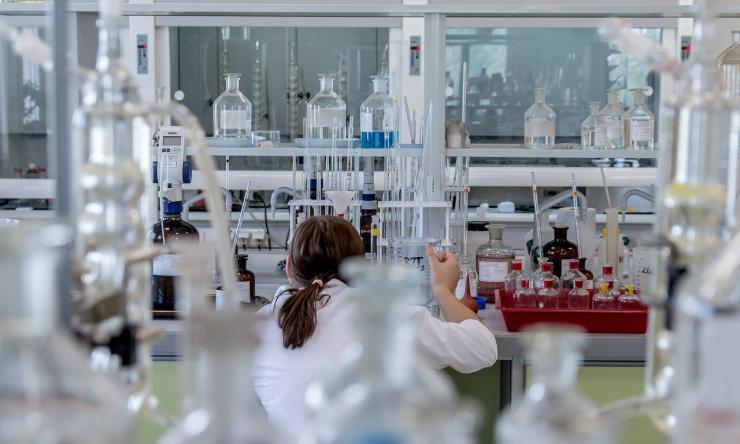P-bodies sustain acute myeloid leukemia
An international team of scientists has uncovered a mechanism by which acute myeloid leukemia (AML) cells sustain their growth.
Researchers at Baylor College of Medicine, University of Veterinary Medicine in Austria and Josep Carreras Leukaemia Research Institute in Spain discovered that AML cells prevent the synthesis of proteins that suppress their growth by forcibly isolating the mRNAs that encode such proteins within structures known as P-bodies. These findings, published in Nature Cell Biology, offer a novel perspective into the survival mechanisms of AML and possibilities for new anti-cancer therapies.
“Despite important advances in cancer research, the prognosis for most AML patients remains poor,” said co-corresponding author Dr. Bruno Di Stefano, assistant professor of molecular and cellular biology and part of the Stem Cell and Regenerative Medicine (STaR) Center at Baylor. “Our goal was to identify and mechanistically understand new vulnerabilities of leukemia cells that could potentially be therapeutically targeted in AML.”
Previous studies have shown that leukemia cells corrupt the process that translates mRNAs into proteins in ways that facilitate their growth, but the underlying mechanisms are poorly understood.
“Our first insight into how leukemia cells might derail normal translation control was the discovery that they harbored more P-bodies than their normal counterparts,” said Di Stefano, member of the Dan L Duncan Comprehensive Cancer Center. “Excitingly, P-bodies were essential for the growth of leukemia cells, but not normal blood cells, suggesting a potential AML-specific dependency.”
P-bodies are a type of biomolecular condensates that concentrate proteins and nucleic acids such as RNA inside cells. P-bodies serve as reservoirs that sequester specific mRNAs from the cellular machinery that translates them into proteins. “We think of P-bodies as storage units for RNAs,” Di Stefano said.
The researchers profiled the mRNAs in the P-bodies of AML cells. “We discovered that leukemia cells sequester mRNAs encoding tumor suppressor proteins within P-bodies,” Di Stefano said. “Of particular importance, these mRNAs were not degraded, and by forcibly dissolving P-bodies, we found that the mRNAs could be translated into proteins capable of curtailing AML.”
“Indeed, abolishing P-bodies by removing DDX6, one of the proteins responsible for their formation, triggered the death of cancer cells in diverse models of human AML, across multiple different subtypes and mutations,” said co-corresponding author Dr. José L. Sardina, principal investigator at Josep Carreras Leukemia Research Institute. “AML is a heterogeneous disease and finding a molecular pathway that might be a conserved Achilles’ heel is quite exciting. Of equal importance, P-body loss had little effect upon normal blood cell production, further highlighting the potential of targeting P-body formation in AML.”
“The discovery that AML cells depend on P-bodies and of the underlying molecular mechanisms has several important implications,” said co-corresponding author, Dr. Florian Grebien, professor of medical biochemistry at the University of Veterinary Medicine, Vienna. “First, it provides novel insights into the little studied mechanism of controlled mRNA translation in the context of cancer development. Second, as the DDX6 protein is a pharmacologically tractable molecule, our work opens new avenues for the development of anticancer agents that target this mechanism.”
For a complete list of the authors, their affiliations and the financial support for this project see the publication.










